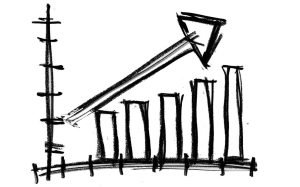
The financial world is a dynamic landscape, with the actions of central banks holding significant sway over various aspects of the economy. In this article, we’ll explore the recent move by the Federal Reserve and its potential impact on savings accounts. Understanding the implications of such decisions is crucial for individuals looking to optimize their savings strategy in an ever-changing economic environment.
The Fed’s Recent Move:
The Federal Reserve plays a pivotal role in shaping the economic landscape, and its recent decisions can have a ripple effect on various financial instruments, including savings accounts. The central bank’s primary tool is the federal funds rate, and any adjustments to this rate can influence interest rates across the board.
Implications for Savings Accounts:
Interest Rate Changes:
The most direct impact of the Fed’s move on savings accounts is reflected in interest rates. If the Federal Reserve decides to raise the federal funds rate, it is likely to lead to an increase in the interest rates offered on savings accounts. Conversely, a rate cut may result in lower interest rates for savers.
Inflation Dynamics:
The Federal Reserve often considers inflation targets when making policy decisions. Inflation erodes the purchasing power of money over time, and the central bank may adjust interest rates to either stimulate economic activity or curb inflation. Savers should be mindful of the potential impact of inflation on the real returns of their savings.
Economic Outlook:
The Fed’s actions are often guided by its assessment of the overall economic outlook. If the central bank expresses optimism about economic growth, it may signal a potential increase in interest rates. Savers should pay attention to the language used by the Federal Reserve in its communications, as it can provide insights into the direction of future rate changes.
Strategies for Savers:
Monitor Interest Rate Trends:
Stay informed about interest rate trends and be proactive in adjusting your savings strategy accordingly. This might involve exploring accounts with higher yields or considering alternative savings vehicles if interest rates are expected to decline.
Diversify Your Savings:
Consider diversifying your savings across different types of accounts. While traditional savings accounts offer stability, exploring options like certificates of deposit (CDs) or money market accounts may provide better returns in certain interest rate environments.
Stay Informed About Economic Indicators:
Economic indicators such as inflation rates, unemployment figures, and GDP growth can offer valuable insights into the Fed’s potential moves. Keeping an eye on these indicators can help you anticipate changes in interest rates and adjust your savings strategy accordingly.
The Federal Reserve’s decisions have far-reaching consequences, and savers should remain vigilant in understanding the potential implications for their financial goals. By staying informed about interest rate trends, economic indicators, and the central bank’s communication, individuals can make informed decisions to safeguard and grow their savings. As the financial landscape continues to evolve, a proactive and informed approach is key to navigating the intricacies of savings in a dynamic economic environment.












